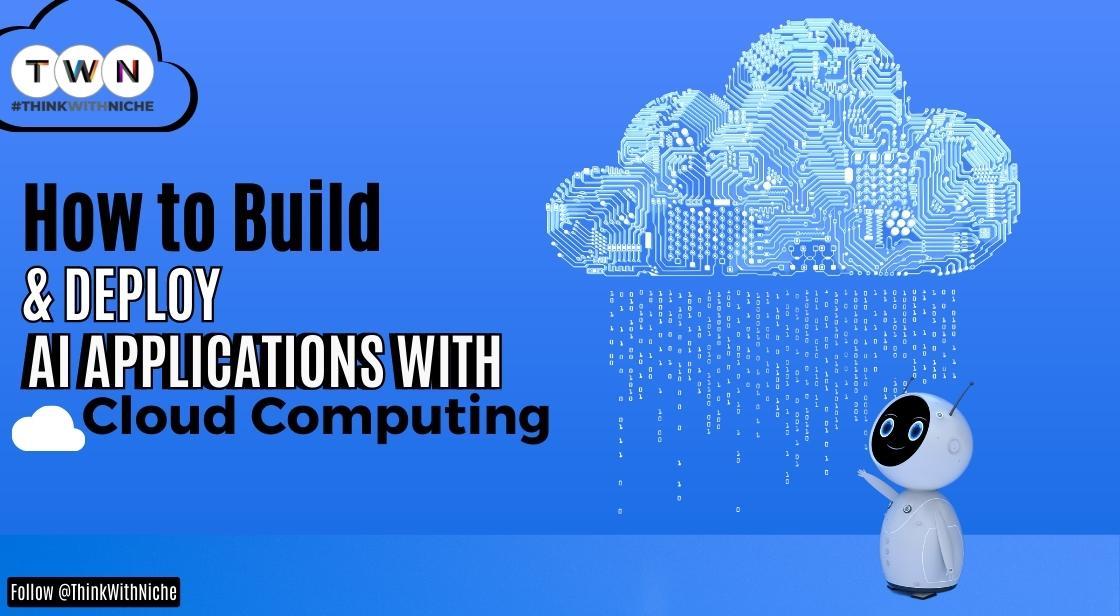How To Build And Deploy AI Applications With Cloud Computing

Blog Post
Artificial Intelligence (AI) has the potential to transform various industries, but building and deploying AI applications can be a challenging task. Cloud computing provides a solution by offering the necessary computational resources and services to develop and deploy AI applications. In this context, building and deploying AI applications with cloud computing involves several steps that require attention. Cloud platforms offer a range of deployment options, such as containerization, serverless computing, and virtual machines.
You need to monitor and maintain your AI application to ensure it continues to deliver accurate results. Cloud platforms offer a range of tools for monitoring and managing your AI application, such as performance metrics, logging, and alerting. These tools can help you identify issues and optimize your application's performance.
By leveraging cloud-based AI tools and platforms, you can streamline the development process, scale up the training process, and deploy your AI model with ease. With the right approach, building and deploying AI applications with cloud computing can be an effective way to transform your business and drive innovation.
Building and deploying artificial intelligence (AI) applications can be a complex and time-consuming process, but cloud computing has made it easier and more accessible than ever. In this article, we'll explore how businesses can use cloud computing to build and deploy AI applications, including different cloud platforms, best practices for development, and tips for success.
How To Build And Deploy AI Applications With Cloud Computing
I. Choosing the Right Cloud Platform for Your AI Needs
A. Public Cloud Platforms
Public cloud platforms like Amazon Web Services (AWS), Microsoft Azure, and Google Cloud Platform provide access to a wide range of AI tools and services. These platforms are highly scalable and offer flexible pricing options, making them ideal for businesses of all sizes.
B. Private Cloud Platforms
Private cloud platforms provide more control over the infrastructure and data, making them a good choice for businesses with specific security or compliance requirements. These platforms are also highly customizable, allowing businesses to tailor the environment to their specific needs.
C. Hybrid Cloud Platforms
Hybrid cloud platforms combine the benefits of public and private clouds, allowing businesses to balance cost, security, and flexibility. These platforms are ideal for businesses with varying workloads or changing needs.
II. Best Practices for Developing AI Applications in the Cloud
A. Define Your Use Case
Before developing an AI application, it's important to define the use case and identify the business problem you're trying to solve. This will help guide your development efforts and ensure that the application delivers value to the business.
B. Clean and Prepare Your Data
AI applications require large amounts of high-quality data to function properly. It's important to clean and prepare the data before using it to train the AI model. This will help ensure that the model is accurate and effective.
C. Choose the Right Tools and Frameworks
There are many AI tools and frameworks available in the cloud, including TensorFlow, PyTorch, and Microsoft Cognitive Toolkit. It's important to choose the right tools and frameworks based on your specific needs and use case.
D. Train and Test Your Model
Once you have clean data and the right tools and frameworks, it's time to train and test your AI model. This process can be time-consuming and resource-intensive, so it's important to use cloud resources to scale up and accelerate the process.
Also Read: Unlocking The Benefits Of Artificial Intelligence For Your Business
III. Tips for Success with Cloud-based AI Development
A. Use Automation and Orchestration
Cloud platforms offer many automation and orchestration tools that can help streamline the AI development process. These tools can help manage resources, monitor performance, and scale up or down as needed.
B. Monitor and Optimize Performance
AI applications require ongoing monitoring and optimization to ensure that they're delivering the desired results. Cloud platforms offer many monitoring and optimization tools, such as automated alerts and performance dashboards.
C. Leverage the Community
The cloud-based AI development community is constantly evolving and innovating. By participating in online forums, attending conferences, and engaging with other developers, businesses can stay up-to-date on the latest trends and best practices.
Conclusion:
Cloud computing has made it easier and more accessible than ever to build and deploy artificial intelligence applications. By choosing the right cloud platform, following best practices for development, and leveraging cloud-based tools and resources, businesses can create effective and efficient AI applications that drive value and success. By staying up-to-date on the latest trends and engaging with the community, businesses can ensure that they're getting the most out of their cloud-based
You May Like
EDITOR’S CHOICE












